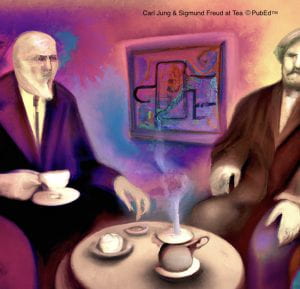
Abstract
This paper delves into the foundational concepts of Sigmund Freud’s psychoanalytic theory, including the ego, id, and superego, and subsequently explores Erik Erikson’s stages of psychosocial development. Drawing parallels and distinctions between the two theories, this paper provides a comprehensive understanding of the complexities of human development across the lifespan.
Sigmund Freud, the pioneering Austrian neurologist and psychologist, revolutionized psychology with his tripartite model of the mind, comprising the ego, id, and superego.
Concurrently, Erik Erikson, a prominent psychoanalyst, introduced a psychosocial theory emphasizing the importance of social and cultural influences on development.
Freud’s Psychoanalytic Theory
The Ego: Mediator of Reality
At the heart of Freud’s model lies the ego, operating on the “reality principle” to balance the desires of the id with external constraints. Acting as an executive function, the ego employs defense mechanisms and rationalization to navigate the challenges of daily life.
The Id: Source of Instinctual Drives
Conversely, the id, driven by the pleasure principle, embodies primal instincts and desires. It seeks immediate gratification of needs, representing a tempestuous, impulsive force within the psyche.
The Superego: Internalized Morality
The superego, influenced by societal and parental norms, serves as the internal conscience. Upholding moral and ethical standards, it evaluates and judges individual actions, often eliciting feelings of guilt or pride.
Conflict and Resolution: The Dynamic Interplay
Freud postulated that conflicts among the ego, id, and superego drive human behavior. Unresolved intrapsychic conflicts can lead to psychological distress, underscoring the importance of conflict resolution for a balanced psyche.
Erikson’s Psychosocial Theory
Erikson expanded upon Freud’s work, emphasizing the influence of social and cultural factors on development. His theory outlines eight stages, each characterized by a unique psychosocial crisis and corresponding virtue.
Freud vs. Erikson
While both theories acknowledge the significance of early experiences, Freud’s emphasis on biological drives contrasts with Erikson’s focus on psychosocial challenges. Additionally, Erikson’s stages extend throughout the lifespan, addressing identity development in adolescence and beyond, whereas Freud primarily centers on childhood experiences.
Freud’s tripartite model and Erikson’s psychosocial theory offer valuable insights into the complexities of human development. Understanding the interplay between biological drives, social influences, and individual identity formation provides a comprehensive framework for comprehending human behavior and mental processes. By exploring the nuances and commonalities between these theories, we gain a deeper appreciation for the multifaceted nature of human development across the lifespan.
References
Erikson, E. H. (1950). Childhood and society. Norton & Company.
Freud, S. (1923). The ego and the id. Internationaler Psychoanalytischer Verlag.
Freud, S. (1933). New introductory lectures on psychoanalysis. W. W. Norton & Company.
Mitchell, S. A., & Black, M. J. (1995). Freud and beyond: A history of modern psychoanalytic thought. Basic Books.
Nevid, J. S., Rathus, S. A., & Greene, B. (2008). Psychology and the challenges of life: Adjustment and growth (10th ed.). John Wiley & Sons.
Seligman, M. E. P. (2006). Learned optimism: How to change your mind and your life. Vintage Books.





